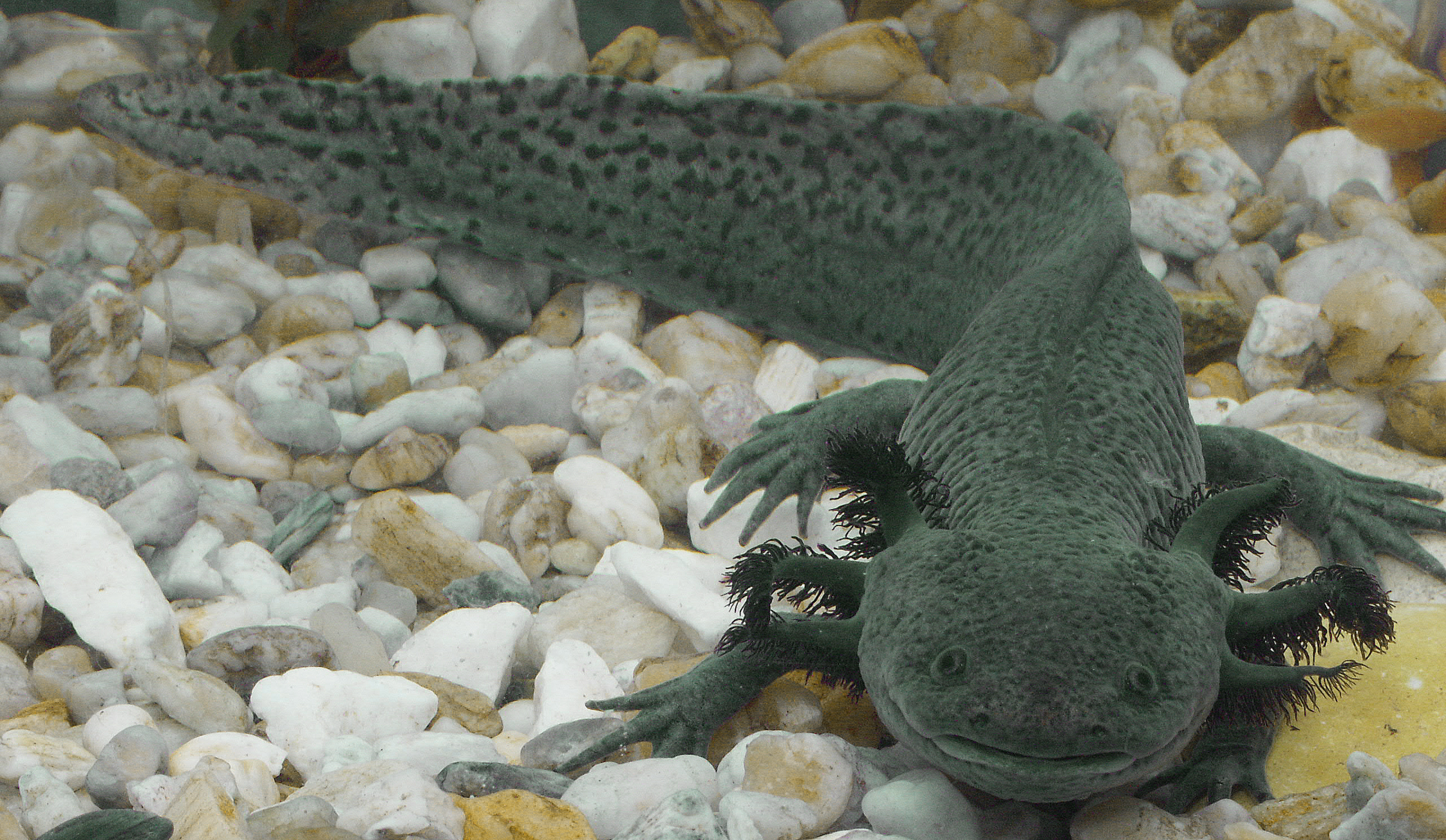Mexico’s Singular Salamander
This critically endangered salamander reaches sexual maturity without undergoing metamorphosis.

Though one might come across images of white or pale pink axolotls when browsing the Internet, those are usually captive stock and are generally rare, says conservation biologist Jeanne McKay. The species is actually more commonly dark brown or olive-colored when found in the wild. Photo by I.G. Bride
The adult salamander pictured here has short limbs and toes, and gills sprouting from its head—features typical of amphibian larvae. But this species, known as the axolotl (pronounced ACK-suh-LAH-tuhl), is known for retaining these larva-like traits even after it reaches sexual maturity.
“Axolotls exhibit neoteny, which means that they reach sexual maturity without undergoing metamorphosis,” Jeanne McKay, a conservation biologist and honorary research associate at the University of Kent in the U.K., explained via email. “Neoteny is present in all salamander families and has been attributed to serving as a survival mechanism,” because adults with larval characteristics can reproduce better and live in habitats with lower quality or quantities of food than mature salamanders that have lost those features.
More incredible of a survival adaptation might be the amphibian’s ability to regenerate many parts of its body. “You can cut their limb, and it’ll regenerate everything. You can cut part of their brain and it will regenerate that,” says Luis Zambrano, an ecologist at the National Autonomous University of Mexico who’s been studying the animal for almost two decades.
Invest in quality science journalism by making a donation to Science Friday.
Though popular as a pet, axolotls (Ambystoma mexicanum) are currently found in the wild only in one place in the world, according to Zambrano: Lake Xochimilco, which is just south of Mexico City. “All of Mexico City used to be a huge lake. Now, the last remnants of that lake is this area,” explains Zambrano. “More than a lake, it’s a wetland.”
But rapid urbanization, high levels of water pollution, and the introduction of certain non-native fish species, such as African tilapia and Asian carp, have increasingly threatened axolotls (the International Union for Conservation of Nature, or IUCN, first listed the species as critically endangered in 2006). It’s estimated that the axolotl population has plummeted from 600 per square kilometer in 1998 to 0.5 per square kilometer in 2014, according to McKay.
Saving this salamander from extinction means saving its habitat, says Zambrano. “We know we can grow them in tanks, but that’s not the same,” he says. “We have to save the species with the habitat.”
Zambrano is currently involved with a few conservation efforts, including one where he hopes to convince local farmers to grow organically, without pesticides or fertilizers, which would improve wetland habitat for axolotls. While the organic products might be more expensive, the farms would be contributing to the survival of the endangered species, and possibly be more profitable for the farmers.
“These people are not rich—they are farmers with low incomes—so the idea is to increase the income of these people because they are protecting the animal,” Zambrano says.
McKay says there’s a lot of promise in trying to save the axolotl.
“With its fascinating history, cultural importance, and incredible abilities, it makes for an excellent flagship species—not an easy thing to achieve for many species, but especially amphibians,” she wrote. “What I find most inspiring is that this incredible amphibian has the potential now to save an ancient wetland system and associated economy that it helped to support centuries ago!”
Chau Tu is an associate editor at Slate Plus. She was formerly Science Friday’s story producer/reporter.